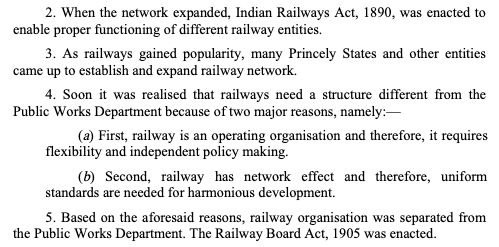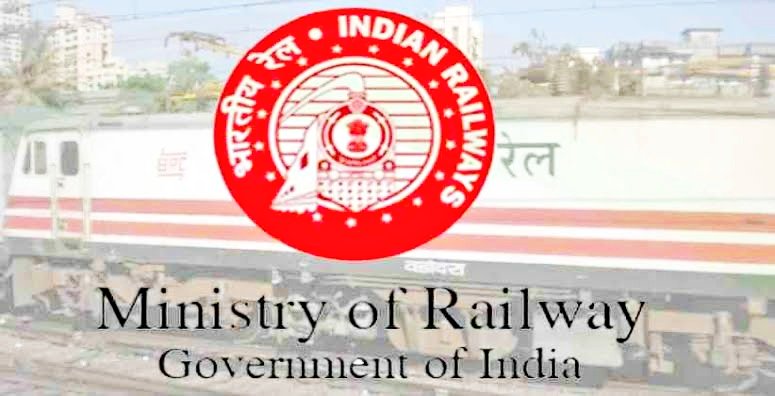The Act of Relabelling
संपादकीय टिप्पणी: पुरानी बोतल पर एक नया लेबल लगा है और अब साबुन की टिकिया के साथ एक कंघा भी पैक होकर मिलेगा, अलग खरीदने की आवश्यकता नहीं। कुछ ऐसा ही नए रेलवे एक्ट के ताजा संशोधन से लगा। ऐसा क्या जो पहले नहीं हो सकता था, या नहीं हुआ!
Mar 11, 2025: “Rajya Sabha Passes Historic Bill for Railway Reforms: Minister Highlights Key Achievements”
खैर, उसका विश्लेषण चल रहा है। लेकिन एक रिटायर्ड सुधि पाठक ने मेसेज कर एक रोचक बात की ओर #Railwhispers का ध्यान आकृष्ट किया। उन्होंने इस संशोधन में एक भाग का स्क्रीनशॉट साझा किया:

उन्होंने कहा कि ये स्क्रीनशॉट हर वरिष्ठ रेल अधिकारी, #PMO और मंत्री को पढ़ना चाहिए। उन्हें ये समझने में आसानी होगी कि क्यों रेलवे एक एकीकृत व्यवस्था है, और छोटे-छोटे जोन और डिवीजन इसका बेड़ा गर्क कर रहे हैं।
हमने तुरंत एक युवा रेल फैन की मदद ली कि जल्दी ही जेनरेटिव AI का इस्तेमाल कर इस बात को कृपया एक्सप्लेन करें:
From a Railway Expert and a Railway fan:
Rajya Sabha passed The Railways (Amendment) Bill, 2024, a bill further to amend the Railways Act, 1989.
The Amendment explained why Railways needed separate structure than a Public Works Department (#PWD) in Para-4:
a. Soon it was realised that railways need a structure different from the Public Works Department because of two major reasons, namely:—
(a) First, railway is an operating organisation and therefore, it requires flexibility and independent policy making.
(b) Second, railway has network effect and therefore, uniform standards are needed for harmonious development.
While #Railways after independence started slipping in to the ways of staid PWD, today even the senior most officers forget the #principles which made railways stand apart from the regular routine PWD type of tasks.
To explain the term borrowed from economics, ‘network effect’, we used generative AI to collect the references.
Understanding Network Effect
In railway systems, “network effect” means that changes in one part of the network, like #infrastructure or #Train-services, can have ripple effects across the entire system, even far from the original change. This is due to the interconnected nature of railway operations, where trains cannot cross/overtake each other everywhere, leading to dependencies. This is what we meant when we said that widening the FOBs of New Delhi will shift point of stampede to another point.
See: March 11, 2025: “Delhi Stampede: How higher width of FOBs would have helped is debatable”
Here’s a more detailed explanation of network effects in railways:
- Interdependencies: Railway systems are highly interconnected, meaning that a delay or change in one section of the network can impact other sections and even cause cascading delays.
- Long Train Runs: Train journeys can be long, and the railway system has a high degree of interdependencies as trains cannot cross/overtake each other everywhere in the network.
Examples of Network Effects:
- Infrastructure Changes: Upgrading a section of track or a bridge can affect the entire network, requiring adjustments to train schedules and potentially causing delays in other areas.
- Train Service Changes: Adding or removing a train service can impact the overall network, leading to adjustments in other services and potentially overcrowding or underutilisation in certain areas.
- Gauge Choice: The initial choice of rail gauge – the distance between the tracks – has a strong network effect, as it limits the types of rolling stock that can be used on that network.
- Gauge Conversion Decisions: Even when placing isolated rails not connected to any other lines, track layers usually choose a standard rail gauge so they can use off-the-shelf rolling stock.
Network Agglomeration and Diffusion:
- Agglomeration: Railway networks can promote urban sprawl by improving the location of central cities, attracting resources and factors from peripheral cities.
- Diffusion: Railway networks can enhance the integration of peripheral cities with central cities, promoting the diffusion of resources, factors, and industries.
Economic Impact:
- Railway networks can boost population and business agglomeration, and increase premiums for surrounding properties.
Environmental Impact:
- Railways are a climate-smart and efficient way to move people and freight, promoting economic growth while cutting greenhouse gas emissions.
Network Effect & Standardisation
#IRCA promoted cooperation, interoperability and standardisation between various railway systems of the country. It is understandable as one needs agreement between stake holders on rail gauge, coupler heights, height of rolling stock, clearances, OHE alignments, rules of signalling etc.
However, there is another very important element-that is rules of running trains-order of precedences, terminal management etc. While point of origin and termination gets dictated by the economic geography, how load is carried between two points is what has become bottleneck.
Earlier, going between New Delhi and Mumbai needed negotiation between two zonal railways. Now train goes over 3 or 4 zones. Each zonal boundary and infact each divisional boundary increases transaction cost of movement. Look at New Delhi-Kolkata movement, earlier it was just NR-ER, but now one has NR-NCR-ECR-ER boundaries. Track between New Delhi to Howrah (NDLS-HWH) remaining the same, the boundaries have increased.
It is clear that understanding gained by British between 1890 and 1905 has clearly been lost on the mandarins of #RailBhawan. It is hence important that they read the screen shot we have included in the article.
One must understand that Railways is a network and cannot be treated in a district-state-country framework. It is high time that #IndianRailways returns to single digit number of zones. Atleast that is what their own admission in the amendment says.


